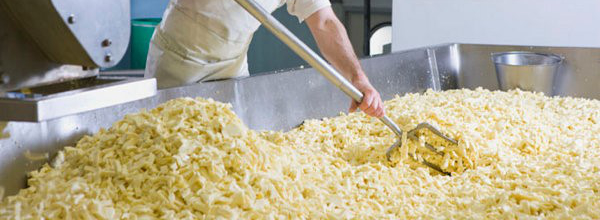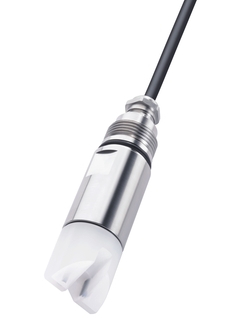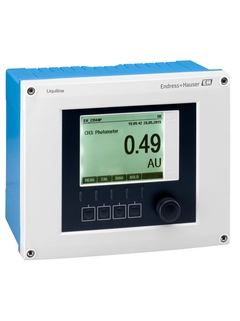Q&A: Temperature transmitters enhance accuracy, safety and cost effectiveness
Greg Pryor is the Temperature Product Marketing Manager at Endress+Hauser USA. To help answer some questions surrounding temperature transmitters, we […]
A cheese plant was able to detect phase separation and reduce product loss in the Clean-in-Place (CIP) process with the accurate and quick response of Endress+Hauser’s optical absorption sensor installed inline. The plant was also able to reduce waste and shorten rinse cycles by using conductive technologies. Operators determine when the pre-rinse is complete with information from the optical sensor, instead of relying on guess work and timing.

Determining phase separation between whey, water and CIP detergent in a cheese plant’s CIP operations is essential to ensuring efficient cleaning and removal of whey from the system. This becomes more complicated with multiple CIP operations performed per day, as was the case for a cheese plant that performed five CIP operations a day. The monthly chemical costs were over $1,700 / 30-gallon drum. With 3-4 drums in use / month, chemical cost monitoring was a big priority for this plant.
By installing an Endress+Hauser OUSAF11 optical phase separation sensor using visible and near-infrared wavelengths of light, operators are able to determine when pre-rinse and CIP cycles are complete. The sensor also helps reduce product loss by monitoring interface levels, suspended solids and turbidity.
Why was the absorption sensor OUSAF11 the solution for the job?
• The OUSAF11 stands up to CIP processes
• The OUSAF11 sensor can be operated continuously up to 194°F (90°C), and up to 266ºF for up to two hours, allowing it to be used in hot CIP processes
• Can be calibrated without having to remove sensor from process line


• Each CIP cycle was reduced by 15 minutes
• The plant used 32% less CIP chemicals. The customer saved over $5,000 in the first 3 months on chemicals alone
• Cost savings from reduced energy, water usage and wastewater production
• Increased equipment availability for processing by more than 1 hour / day
• After implementation, drum usage went from 3-4 drums to 2-3 drums / month
Greg Pryor is the Temperature Product Marketing Manager at Endress+Hauser USA. To help answer some questions surrounding temperature transmitters, we […]
Ensure you are getting the most out of your instrument’s capabilities by talking with one of our technical support services […]
Temperature measurement is a decisive factor in many industrial processes. Across all industries, accurate, fast and reliable measurement of process […]